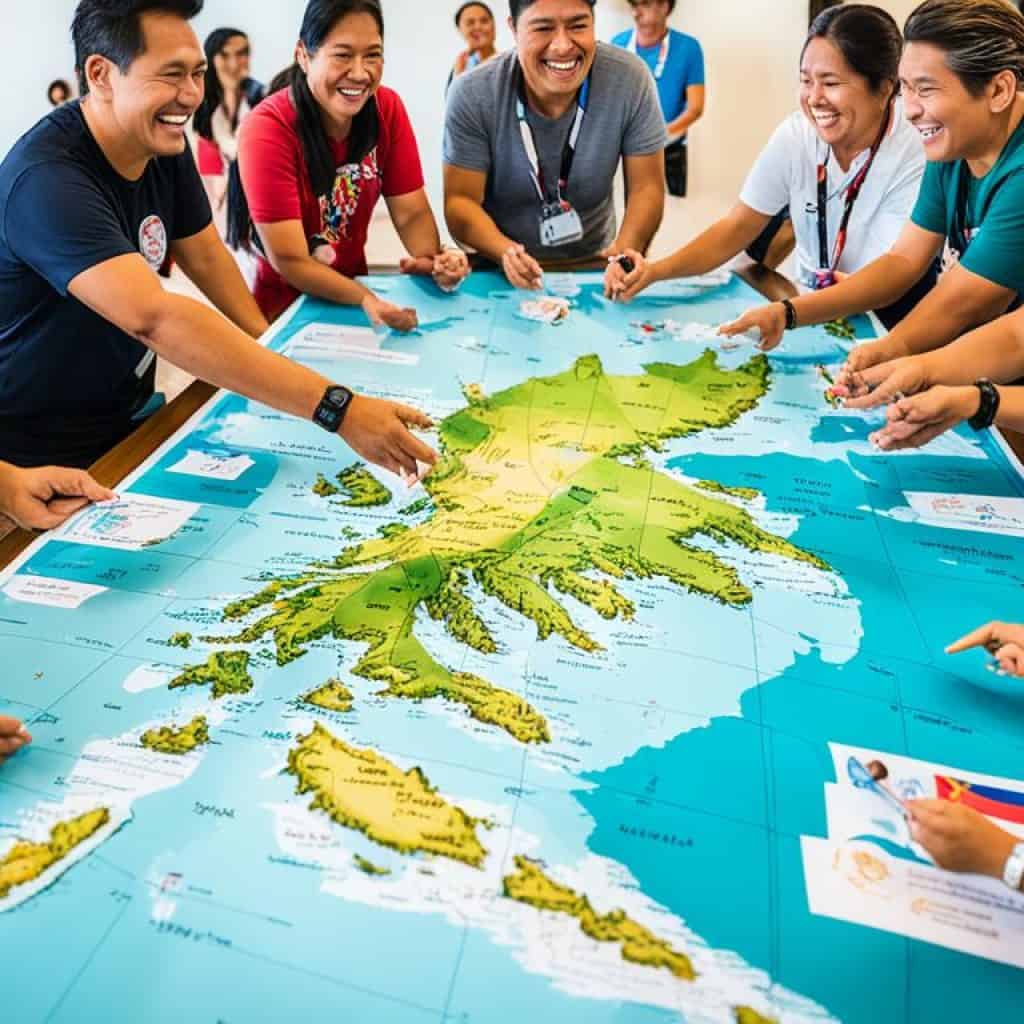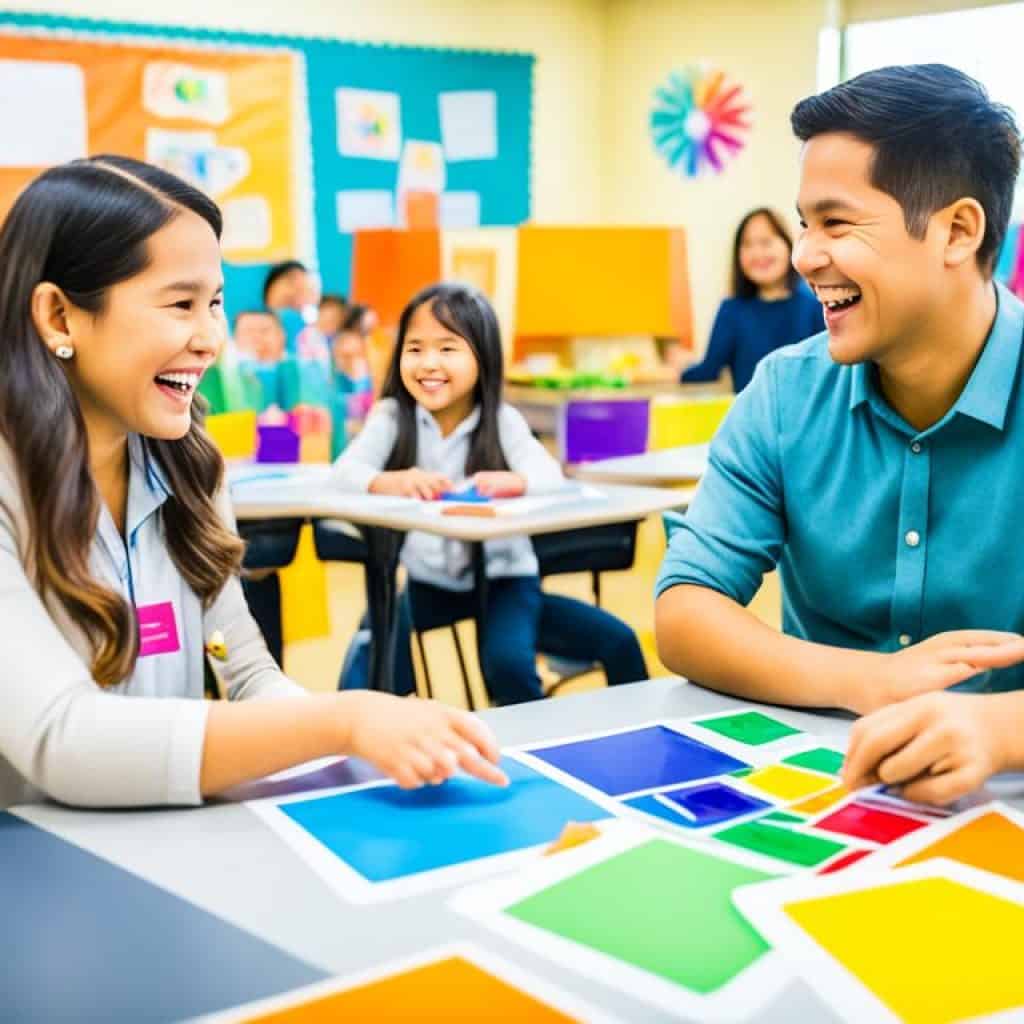Have you ever wondered what language is spoken in the Philippines? Is it Filipino or Tagalog? And what about the other dialects? In this article, we dive deep into the linguistic landscape of the Philippines, uncovering the official language, the various dialects spoken across the archipelago, and the unique characteristics of Filipino language, including its vocabulary, grammar, and alphabet. Get ready to embark on a linguistic journey that will broaden your understanding of the diverse languages spoken in the Philippines!
Key Takeaways:
- The official language of the Philippines is Filipino, which is based on the Tagalog language.
- Filipino serves as the national language and is widely spoken throughout the country.
- In addition to Filipino, there are numerous dialects spoken in different regions of the Philippines, reflecting the cultural diversity of the archipelago.
- The Filipino language has its own vocabulary, grammar, and alphabet, which are distinct from other languages spoken in the Philippines.
- Exploring the linguistic landscape of the Philippines allows us to appreciate the rich cultural heritage and linguistic diversity of the country.
The Significance of Baybayin in Filipino Culture.
Baybayin is an ancient indigenous writing system that holds great cultural and historical significance in Filipino culture. It was used by our ancestors as a tool for storytelling, preserving knowledge, and expressing their beliefs and aspirations. Despite the decline of Baybayin due to colonial influences, there are ongoing efforts to revive and preserve the script.
The Cultural significance of Baybayin cannot be overstated. It represents the Pre-colonial Philippines and is a testament to the rich heritage and ingenuity of our indigenous ancestors. Baybayin was the indigenous writing system used prior to the arrival of Spanish colonial forces, making it an integral part of our Filipino heritage.
Today, Baybayin serves as a symbol of cultural pride and serves to reconnect present-day Filipinos with our pre-colonial past. Through the study and understanding of Baybayin, we gain insight into the traditions, values, and worldview of our ancestors, fostering a deeper appreciation for our roots.
Efforts to revive Baybayin have gained momentum in recent years. Organizations such as the Baybayin Foundation and the Aeta Cultural Center have been instrumental in promoting the study and use of Baybayin. Educational programs, workshops, and research initiatives have been launched to preserve and revitalize this indigenous writing system.
Baybayin Organizations in the Philippines
Several organizations play a vital role in the Baybayin revival movement. Here are two prominent Baybayin organizations in the Philippines:
- Baybayin Foundation
The Baybayin Foundation is dedicated to preserving and promoting Baybayin as an integral part of Filipino culture. Through educational programs, workshops, and advocacy, the foundation aims to raise awareness and appreciation for Baybayin among Filipinos of all ages. They conduct research, offer resources, and organize events to foster a deeper understanding of Baybayin’s cultural significance.
- Aeta Cultural Center
The Aeta Cultural Center is a non-profit organization that aims to uplift and preserve the cultural heritage of the Aeta indigenous community in the Philippines. They actively promote and teach Baybayin as part of their efforts to preserve and revive Aeta traditions. The center conducts workshops, cultural immersion programs, and artistic collaborations to ensure the continuity of Baybayin in the Aeta community.
The revival of Baybayin not only reconnects us to our heritage but also serves as a testament to the resilience and perseverance of our indigenous cultures. It is through the preservation and celebration of practices like Baybayin that we honor the cultural diversity and richness of the Filipino people.
The Revitalization of Baybayin for a New Generation.
The revitalization of Baybayin, an ancient indigenous writing system of the Philippines, requires collective efforts from educators, cultural institutions, and community leaders. By incorporating Baybayin into the school curriculum, we can ensure that the younger generation learns about this historical script’s history and significance.
Workshops and seminars on Baybayin can be organized to provide interested individuals the opportunity to learn and practice this unique writing system. These sessions can delve deeper into the various characters and symbols of Baybayin and help participants develop proficiency in reading and writing Baybayin text.
Promoting the use of Baybayin in everyday life is another essential aspect of its revitalization. This can include incorporating Baybayin characters in signage, logos, and publications, highlighting the script’s cultural and historical value.
“Learning Baybayin has been a transformative experience for me, allowing me to connect with my ancestral roots and preserve our rich cultural heritage,” shared Maria Santos, a Baybayin enthusiast.
Personal stories and testimonies, like Maria’s, exemplify how Baybayin can have a profound impact on individuals and motivate them to actively preserve this important script for future generations.
| Benefits of Reviving Baybayin |
|---|
| Reconnection to ancestral roots |
| Preservation of cultural heritage |
| Stimulation of artistic expression |
| Enhancement of historical understanding |
| Fostering a sense of pride and identity |
By reviving Baybayin, we can preserve an integral part of Filipino history and culture. Through education, workshops, and personal experiences, we can ensure that Baybayin remains alive and continues to enrich our lives in the present and future.

Exploring the Beauty of Baybayin
Baybayin is not only a writing system; it is an art form that reflects the beauty and creativity of Philippine culture. Each character or “kudlit” carries a unique meaning and embodies the historical and symbolic significance of the Filipino people.
Introducing Filipino Children's Books in Indigenous Languages.
Room to Read, a global nonprofit organization, has partnered with Philippine publishers to launch children’s books in the Filipino language. These books, created by local authors and illustrators, focus on themes of inclusion and portray children with disabilities or from diverse backgrounds. The aim is to develop reading skills in Filipino children while promoting values such as empathy, resilience, and gender equality. Such initiatives are crucial for promoting literacy and providing representation in children’s literature.
The initiative by Room to Read and Philippine publishers is a significant step in addressing the need for diverse and inclusive children’s books in the Filipino language. By incorporating indigenous languages into children’s literature, these books give Filipino children the opportunity to see themselves and their cultures reflected in the stories they read. This representation not only fosters a sense of pride and belonging but also encourages reading skills development.
Including indigenous languages in children’s books also plays a vital role in preserving and promoting these languages. With many indigenous languages at risk of becoming endangered, it is essential to provide opportunities for their continued use and celebration. By featuring stories in indigenous languages, children can learn and appreciate the richness and diversity of the Filipino linguistic landscape.
Room to Read’s partnership with Philippine publishers not only enriches the literary scene in the Philippines but also supports initiatives to promote literacy and foster inclusivity. These books not only serve as tools for language acquisition and reading skills development but also as bridges between different cultures and communities.
“Children’s literature is a powerful medium that can shape the way children see themselves and the world around them,” says Laura Bush, Co-founder of Room to Read. “By introducing children’s books in indigenous languages, we are providing all children with the opportunity to see themselves as valued members of society and fostering a love for reading and learning.”
“It is crucial to create a diverse and inclusive literary landscape that reflects the true diversity of our society. By incorporating indigenous languages in children’s literature, we are not only preserving our linguistic heritage but also cultivating a sense of belonging and respect for different cultures.”
Benefits of Introducing Filipino Children’s Books in Indigenous Languages Development of reading skills in Filipino children Promotion of empathy, resilience, and gender equality Preservation and promotion of indigenous languages Representation and inclusivity in children’s literature Fostering a sense of pride and belonging among children
The Origins of the Filipino Language.
The Filipino language has its origins in the Austronesian language family, which influenced its development over time. The Austronesian language family is one of the largest language families in the world, encompassing languages spoken across Southeast Asia, the Pacific, and parts of East Africa. This language family includes languages such as Malay, Indonesian, Javanese, and Tagalog, which is the basis of the Filipino language.
Before the arrival of colonizers, the pre-colonial Philippines had a diverse linguistic landscape. Various indigenous languages were spoken across the archipelago, reflecting the rich cultural and ethnic diversity of the region. These languages belonged to different language families and had their own distinct characteristics and structures.
The Spanish colonization of the Philippines in the 16th century brought significant changes to the language. The Spanish introduced the Latin script and heavily influenced the vocabulary and grammar of Tagalog, which eventually became the basis of Filipino. Spanish words were assimilated into the language, resulting in a unique blend of indigenous and Spanish elements.
During the American colonial period in the early 20th century, English gained prominence in the Philippines. English was used as the medium of instruction and the language of governance. This further influenced the development of Filipino, as English words and phrases were incorporated into the language.
Despite the influences of Spanish and English, Filipino remains rooted in its Austronesian origins. It serves as a symbol of national identity, reflecting the diverse linguistic and cultural heritage of the Philippines. Filipino is an official language of the Philippines and is widely spoken by Filipinos both within the country and overseas.
Overall, the origins of the Filipino language highlight the complex linguistic connections and pre-colonial linguistic diversity of the Philippines. The influence of Spanish and American colonization, along with the unique development of Filipino, has shaped the language into a symbol of national identity and unity.
The Linguistic Diversity of Pre-colonial Philippines.
The pre-colonial Philippines was a vibrant tapestry of diverse indigenous languages, each bearing its own distinct characteristics and contributing to the linguistic richness of the region. This linguistic diversity was a reflection of the varied ethnic groups and cultures that inhabited the archipelago. Tagalog, Cebuano, Ilocano, Kapampangan, and Hiligaynon were among the major indigenous languages spoken during this era, each with their own unique contributions to the linguistic landscape of the Philippines.
Tagalog, originating from the Manila region, emerged as one of the notable indigenous languages of pre-colonial Philippines. It played a significant role in shaping the linguistic heritage of the country and ultimately became the basis for the development of Filipino, the national language of the Philippines.
Cebuano, spoken primarily in the Visayas region, was another prominent indigenous language with a rich cultural heritage. It has a substantial number of speakers and continues to play a vital role in the linguistic diversity of the Philippines.
Ilocano, the third most spoken language in the Philippines, is prevalent in the northern part of Luzon. It is known for its distinct grammatical structure and vocabulary, which reflect the unique cultural identity of the Ilocano people.
Kapampangan, spoken in the province of Pampanga, is renowned for its rich literary traditions and unique phonology. It has contributed significantly to the linguistic and cultural heritage of the Philippines.
Hiligaynon, primarily spoken in Western Visayas, is known for its vibrant oral traditions and expressive poetic forms. It is a testament to the linguistic diversity and cultural richness of the pre-colonial Philippines.
Contributions of Indigenous Languages
The indigenous languages spoken in pre-colonial Philippines made invaluable contributions to the linguistic development of the region. These languages served as the medium through which cultural expressions, folklore, and traditions were passed down from generation to generation. They fostered a sense of identity and belonging among different ethnic communities and played a pivotal role in shaping the cultural tapestry of the Philippines.
Furthermore, the indigenous languages served as the foundation for the development of Filipino, the national language of the Philippines. The vocabulary, grammar, and phonological aspects of these languages influenced the formation of Filipino, creating a language that reflected the multicultural and pluralistic nature of the Philippines.
Major Indigenous Languages of Pre-colonial Philippines
| Language | Region | Significance |
|---|---|---|
| Tagalog | Manila region | Development of Filipino |
| Cebuano | Visayas region | Linguistic diversity |
| Ilocano | Northern Luzon | Cultural identity |
| Kapampangan | Pampanga | Literary traditions |
| Hiligaynon | Western Visayas | Oral traditions |
The linguistic diversity of the pre-colonial Philippines is a testament to the cultural richness and distinct identities of the various ethnic groups that inhabit the archipelago. These indigenous languages continue to shape the collective heritage of the Filipino people, highlighting the importance of preserving and appreciating the linguistic diversity that exists within the Philippines.
Language Influences in Pre-colonial Philippines.
The pre-colonial Philippines experienced rich cultural exchanges with neighboring regions, resulting in significant influences on the development of indigenous languages. These cultural exchanges contributed to the formation of a linguistic melting pot, where various languages and cultures intertwined, creating a unique synthesis.
The Malay influences on the pre-colonial Philippines played a vital role in shaping the vocabulary, trade, and cultural practices. The influence of Sanskrit can be observed in religious and philosophical terms, as well as in the writing system. Additionally, Arabic influences left a lasting impact on Muslim communities, particularly in Mindanao and the Sulu Archipelago.
“The assimilation of words and concepts from different languages led to a remarkable assimilation and enrichment of indigenous languages in the Philippines.” – Dr. Maria Santos, Linguistics Expert
This cultural assimilation of words resulted in a unique synthesis, where bridging indigenous languages fostered a sense of unity among diverse communities. These influences added depth and richness to the vocabulary, shaping languages that later contributed to the development of Filipino, the national language of the Philippines.
Influences on Pre-colonial Philippine Language
| Cultural Influences | Linguistic Impact |
|---|---|
| Malay | Enrichment of vocabulary, trade practices |
| Sanskrit | Influence on religious and philosophical terms, writing system |
| Arabic | Impact on Muslim communities, particularly in Mindanao and the Sulu Archipelago |

The cultural exchanges in pre-colonial Philippines paved the way for the assimilation and amalgamation of diverse linguistic influences, resulting in a linguistic melting pot. This multicultural and multilingual environment laid the foundation for the development of the rich linguistic heritage that characterizes the Philippines today.
The Birth of Tagalog as the Basis of Filipino.
The Spanish colonial period had a profound impact on the linguistic landscape of the Philippines. With the arrival of the Spanish, the Latin script was introduced, supplanting the indigenous scripts previously used by local communities. During this period, Tagalog, spoken in the Manila region, emerged as the dominant language and served as the foundation for the development of Filipino.
The influence of Spanish colonization extended beyond language, shaping the culture and practices of the Philippines. The amalgamation of Spanish and indigenous elements gave rise to the unique Hispano-Filipino culture, which continues to influence Filipino society to this day.
Let us take a closer look at the birth of Tagalog as the basis of Filipino:
The Introduction of Spanish and the Latin Script
With the arrival of Spanish missionaries and colonizers, the Latin script was introduced as a writing system in the Philippines. This replaced the ancient scripts used by indigenous communities and facilitated communication between the Spanish and the local population.
The introduction of Spanish brought about a fusion of Spanish and indigenous cultures, known as Hispano-Filipino culture. This cultural amalgamation can be observed in various aspects of Filipino society, including language, religion, cuisine, and traditions.
Tagalog as the Dominant Language
Tagalog, spoken by the inhabitants of the Manila region, gained prominence under Spanish rule. It became the dominant language due to its strategic location and the influence of Spanish missionaries in the area.
As Tagalog emerged as the primary language of the colonial capital, it gradually assimilated Spanish loanwords, expressions, and grammatical structures. This linguistic fusion laid the groundwork for the development of the Filipino language.
The Development of Hispano-Filipino Culture
The Spanish presence in the Philippines resulted in a complex intermingling of Hispanic and indigenous cultures. This fusion of cultural elements gave birth to Hispano-Filipino culture, characterized by its unique blend of Spanish and Filipino traditions.
The influence of Spanish colonization can be seen in various aspects of Filipino culture, from religious practices and fiestas to architecture and art. The enduring impact of this cultural synthesis is a testament to the enduring legacy of Spanish colonialism in the Philippines.
Table: Spanish Influence on the Filipino Language
| Aspect | Spanish Influence |
|---|---|
| Vocabulary | Assimilation of Spanish loanwords into Tagalog and Filipino |
| Grammar | Adoption of Spanish grammatical structures and syntax |
| Pronunciation | Influence of Spanish pronunciation on Filipino speech patterns |
| Writing System | Introduction of the Latin script as the standard writing system |
“The birth of Tagalog as the basis of Filipino represents the synthesis of Spanish and indigenous cultures, giving rise to the unique Hispano-Filipino culture that defines the Philippines.”
The Rise of English and the Language Debate.
The American colonial period had a significant impact on the language landscape of the Philippines. During this time, the English language gained widespread usage and became an influential medium of instruction and language of governance. English was not only considered a practical language, but it also symbolized upward mobility for Filipinos. Its influence extended beyond the realm of education, permeating various aspects of society.
As English grew in prominence, a language debate arose. Proponents of English argued for its practicality and global competitiveness, emphasizing its role in positioning the Philippines on the world stage. They believed that English proficiency would provide Filipinos with more opportunities for economic advancement and international communication.
“English proficiency equips Filipinos with the necessary skills to navigate the globalized world, thereby opening doors to better employment and enhanced cultural exchange.” – Language advocate
On the other hand, critics of the widespread use of English voiced concerns regarding the potential erosion of indigenous languages and cultural identity. They argued that prioritizing English could lead to a loss of linguistic diversity and hinder the preservation of traditional languages and cultural values.
“Our indigenous languages are the carriers of our unique identities and traditions. We must value and protect them to ensure the richness and distinctiveness of our cultural heritage.” – Language preservationist
The influence of the English language on Filipino culture, literature, and education has shaped the modern Philippines. English remains an essential tool for Filipinos, enabling them to connect with the global community and participate in international discourse. The language debate surrounding English’s role in Philippine society continues, engaging stakeholders in discussions about language policy, language education, and the balance between preserving cultural heritage and embracing the practicality of a global language.
Proponents of English
- t
- Advocates for global competitiveness and practicality. t
- Believe English proficiency opens doors to better employment opportunities. t
- Highlight the importance of cultural exchange facilitated by English.
Critics of English Dominance
- t
- Concerned about the erosion of indigenous languages and cultural identity. t
- Emphasize the value of preserving linguistic diversity and traditional languages. t
- Prioritize the protection of cultural heritage and distinct identities.
The language debate surrounding English continues to shape language policies and educational practices in the Philippines. The challenge lies in finding a balance that allows Filipinos to benefit from English’s practicality while preserving their linguistic and cultural heritage.
Contemporary Challenges and Initiatives for Filipino.
In the digital age and with globalization, the Filipino language faces various challenges that threaten its prominence and relevance. However, concerted efforts are being made to promote and preserve Filipino, recognizing its vital role in safeguarding the cultural heritage of the Philippines and ensuring the continuity of its linguistic traditions.
One of the significant challenges in the digital age is the rise of dominant global languages and the increased accessibility to foreign media and content. As English and other international languages gain popularity, Filipino may face a decline in usage and importance. Additionally, the fast-paced nature of the digital era, characterized by short-form communication and instant translation tools, poses a challenge for the preservation of the Filipino language’s depth and richness.
To address these challenges, initiatives are emerging to promote and preserve Filipino in various domains. Educational programs play a crucial role in ensuring that Filipino remains integral to the education system, emphasizing its importance in fostering cultural identity and strengthening the linguistic skills of future generations.
“Language is the road map of a culture. It tells you where its people come from and where they are going.” – Rita Mae Brown
Cultural initiatives, such as the establishment of language centers and institutes, aim to create awareness, appreciation, and pride in the Filipino language and its cultural significance. These initiatives involve the collaboration of linguists, scholars, and cultural organizations to develop resources, conduct research, and organize events that celebrate the linguistic and cultural heritage of the Philippines.
Furthermore, integrating Filipino into various domains is crucial for its continued relevance. This includes supporting the production and promotion of Filipino literature, music, and films that highlight the beauty and depth of the language. By embracing Filipino in creative expressions and popular media, the language can reach a broader audience, sparking interest and giving it a contemporary and relatable presence.
Preserving Filipino is of utmost importance because the language serves as a bridge between the past and the present, connecting Filipinos to their roots and cultural identity. The Filipino language embodies the values, history, and traditions of the Filipino people, making its preservation essential for the cultural heritage of the Philippines.
In conclusion, while the challenges of the digital age and globalization pose threats to the prominence of Filipino, initiatives to promote and preserve the language are actively addressing these challenges. By investing in educational programs, cultural initiatives, and the integration of Filipino into various domains, we can ensure the importance and relevance of Filipino in the modern era. Preserving the Filipino language is not only crucial for cultural heritage but also fosters a sense of identity, unity, and pride for all Filipinos.
Filipino as a Symbol of National Identity and Unity.
Filipino serves as a symbol of national identity and unity, encapsulating the cultural diversity and linguistic heritage of the Philippines. It represents the shared experiences, values, and aspirations of the Filipino people, transcending regional differences and fostering a sense of togetherness.
Embracing the inclusive nature of the Filipino language plays a crucial role in promoting unity and belonging among diverse ethnic groups. It allows individuals from various backgrounds to express themselves, share ideas, and connect on a deeper level. By recognizing the linguistic diversity present in the Philippines and ensuring inclusivity, we create a stronger national identity that celebrates our unique cultural tapestry.
Moreover, Filipino acts as a unifying force that brings the Filipino people together, transcending barriers of language and geography. It serves as a common thread that binds us, reinforcing our sense of belonging to a shared community. Through the use of Filipino, we can communicate, collaborate, and work towards a common goal, fostering solidarity and driving progress.
“In the diversity of the Filipino language lies the strength of our national identity, as it reflects the richness of our cultural heritage.”
Inclusivity and unity are vital components of a thriving society. By embracing our linguistic heritage and recognizing the value of each language spoken in the Philippines, we foster an environment where everyone feels heard, respected, and included. This inclusivity not only strengthens our national identity but also cultivates a deep sense of pride in our diverse cultural heritage.
Promoting Linguistic Inclusivity
To promote inclusivity and linguistic diversity, initiatives such as language preservation programs, cultural festivals, and educational campaigns can be implemented. These efforts aim to raise awareness, celebrate different languages and dialects, and foster mutual respect among Filipinos.
The Role of Education
Educational institutions play a crucial role in promoting unity and preserving our cultural and linguistic heritage. By incorporating the diverse languages spoken in the Philippines into the curriculum, we ensure that future generations have a strong foundation in their mother tongue while appreciating the beauty of other languages.
Through bilingual education and the inclusion of indigenous languages, we empower students to embrace their linguistic heritage, fostering a deeper connection to their cultural roots. Language learning also promotes understanding, empathy, and respect for different cultures, cultivating a sense of unity among students.
The Power of Cultural Exchange
Cultural exchange programs, community events, and collaborative projects can further enhance unity and appreciation for linguistic diversity. These initiatives provide opportunities for individuals from different regions to interact, learn from one another, and celebrate their unique traditions and languages.
Artistic Expressions
Art, literature, and media serve as powerful mediums to promote linguistic inclusivity and unity. Through the creation and consumption of diverse artworks, literature, and media content, we can amplify the voices of different linguistic communities, ensuring their representation and fostering a greater understanding and appreciation.
By embracing the inclusive nature of the Filipino language, we strengthen our national identity and promote unity among the Filipino people. With each language and dialect spoken in the Philippines contributing to the cultural tapestry of our nation, we celebrate our rich linguistic heritage and foster a sense of togetherness that transcends differences. Filipino stands as a symbol of our shared experiences, values, and aspirations, uniting us all as one nation.
The Importance of Filipino Preschool Education.
Filipino preschool education plays a crucial role in language and cognitive development among young children. Exposing children to the Filipino language at an early age helps them develop a strong foundation in their mother tongue, promotes cultural integration, and enhances their literacy skills. Preschool education in Filipino also instills a sense of pride and identity among Filipino children, nurturing their connection to their cultural heritage.
Language development is a fundamental aspect of early childhood education. By introducing Filipino as the language of instruction in preschools, children are immersed in their native language, enabling them to communicate effectively and express their thoughts and emotions. This immersion fosters language fluency and comprehension, building a solid linguistic foundation that will benefit children throughout their lives.
Cognitive development is another important aspect of preschool education. Through engaging activities, interactive play, and hands-on learning experiences, children develop critical thinking, problem-solving, and memory skills. By incorporating the Filipino language into these activities, children not only advance their cognitive abilities but also strengthen their language skills simultaneously.
Cultural integration is a key component of Filipino preschool education. In a multicultural society like the Philippines, celebrating diversity and promoting inclusivity are vital. By immersing children in the Filipino language and culture, preschools create an environment that respects and appreciates different backgrounds. This cultural integration allows children to develop empathy, respect, and a sense of unity, fostering a harmonious and inclusive society.
Early literacy skills are essential for children’s future academic success. Preschool education in Filipino equips children with the necessary literacy skills, such as phonics, reading comprehension, and vocabulary development. These skills lay the foundation for continued learning and enable children to explore various subjects confidently. By starting early in promoting literacy skills in Filipino, children develop a strong language base that supports their overall educational journey.
The Impact of Filipino Preschool Education:
- Enhanced language proficiency in Filipino
- Improved cognitive abilities
- Culturally inclusive mindset
- Strong early literacy skills
| Benefits of Filipino Preschool Education | Description |
|---|---|
| Language Development | Helps children communicate effectively and build a strong linguistic foundation |
| Cognitive Development | Develops critical thinking, problem-solving, and memory skills through Filipino-based activities |
| Cultural Integration | Promotes diversity, inclusivity, empathy, and a sense of unity among children of different backgrounds |
| Early Literacy Skills | Equips children with phonics, reading comprehension, and vocabulary development in the Filipino language |

The Future of the Filipino Language.
The future of the Filipino language is intricately tied to language preservation and revitalization efforts. It is important to implement language policies that promote multilingualism while respecting the diverse range of languages spoken in the Philippines. By embracing and valuing the linguistic heritage of the country, the Filipino language can continue to develop, remain relevant, and flourish in the modern era.
Languages are the living reflections of a nation’s culture and identity, and the Filipino language is no exception. Through language preservation initiatives, we can ensure that the rich history, traditions, and values embedded within the Filipino language are passed down to future generations.
Acknowledging the importance of language revitalization, the Filipino government, educational institutions, and community organizations play pivotal roles. Implementing policies that support the teaching and learning of Filipino, as well as indigenous languages, both in schools and communities, helps to foster pride and ownership of these languages.
Furthermore, multilingualism should be encouraged and celebrated. Recognizing the various languages spoken in the Philippines as valuable assets to the nation’s cultural tapestry can lead to a more inclusive and diverse society. Multilingual individuals have a unique perspective and contribute to a richer cultural dialogue.
Collaborative efforts are required to preserve, revitalize, and promote the Filipino language. Language preservation programs, community language centers, and cultural festivals play crucial roles in reviving interest in the Filipino language and creating spaces for its use and celebration.
“Languages are the keys to our past, present, and future. Preserving and revitalizing the Filipino language is not only a commitment to our heritage but also an investment in our future generations.” â Dr. Maria Santos, Linguistics Scholar
Looking ahead, the future of the Filipino language relies on a comprehensive language policy that recognizes and celebrates linguistic diversity while providing opportunities for language preservation and revitalization. By nurturing the Filipino language, we ensure that it continues to evolve and adapts to the changing needs of our society while remaining a vital part of our national identity and culture.
| Challenges | Initiatives |
|---|---|
| The influence of global languages | Integration of Filipino in various domains |
| Shifting language preferences | Educational programs promoting the Filipino language |
| Language policy implementation | Promotion of multilingualism and indigenous languages |
| Technological advancements | Preservation efforts through digital platforms |
| Globalization and cultural assimilation | Revitalization programs and community language centers |
Conclusion.
The Filipino language is a testament to the diverse cultural and linguistic heritage of the Philippines. It encompasses the indigenous roots of the archipelago, the influence of Spanish and American colonization, and the ongoing efforts to preserve and promote our language. Filipino has become more than just a means of communication; it has become a symbol of national identity and unity.
By embracing our language and including indigenous languages and dialects, we are actively safeguarding the rich cultural heritage of the Philippines. Through education, cultural initiatives, and a deep sense of pride in our language, we can ensure that the Filipino spirit continues to thrive in the generations to come.
Preserving and promoting Filipino is more than just a linguistic endeavor; it is a way to honor our ancestors, celebrate our diversity, and forge a strong national identity. As we move forward, let us carry the torch of our language with pride, valuing and cherishing the linguistic traditions that have shaped our nation.
FAQ
What is the official language of the Philippines?
The official language of the Philippines is Filipino, which is based on the Tagalog language.
How many dialects are spoken in the Philippines?
There are numerous dialects spoken in different regions of the Philippines, reflecting the cultural diversity of the archipelago.
What is Baybayin?
Baybayin is an ancient indigenous writing system that holds great cultural and historical significance in Filipino culture.
Are there efforts to revive and preserve Baybayin?
Yes, organizations such as the Baybayin Foundation and the Aeta Cultural Center are working towards promoting the study and use of Baybayin through educational programs and research initiatives.
How can Baybayin be revived?
One way to revive Baybayin is by incorporating it into the school curriculum, organizing workshops and seminars, and promoting its use in everyday life, such as in signage and publications.
What is the significance of Filipino children’s books in indigenous languages?
Filipino children’s books in indigenous languages promote inclusion, diversity, and literacy skills development among Filipino children.
What is the origin of the Filipino language?
The Filipino language has its origins in the Austronesian language family, which influenced its development over time.
How diverse was the linguistic landscape of the pre-colonial Philippines?
The pre-colonial Philippines had a diverse linguistic landscape, with various indigenous languages spoken across the archipelago.
What influences shaped the pre-colonial Philippine languages?
The pre-colonial Philippines had extensive cultural exchanges with neighboring regions, which influenced the development of indigenous languages through vocabulary assimilation and cultural synthesis.
How did Spanish colonization impact the Filipino language?
Spanish colonization introduced significant changes to the language, including the replacement of ancient scripts with the Latin script and the emergence of Tagalog as the dominant language, serving as the basis for Filipino.
What impact did American colonization have on the Filipino language?
American colonization brought the influence of English, which became the medium of instruction, language of governance, and a symbol of upward mobility in the Philippines.
What challenges does Filipino face in the digital age?
Filipino faces challenges in maintaining its prominence and relevance in the digital age and globalization.
How can Filipino be preserved and promoted?
Filipino can be preserved and promoted through educational programs, cultural initiatives, and the integration of Filipino in various domains.
What is the importance of Filipino as a symbol of national identity and unity?
Filipino serves as a symbol of national identity and unity by reflecting the cultural diversity and linguistic heritage of the Philippines.
What role does Filipino preschool education play in language and cognitive development?
Filipino preschool education plays a crucial role in language and cognitive development among young children, promoting cultural integration and enhancing literacy skills.
What does the future hold for the Filipino language?
The future of the Filipino language lies in the efforts to preserve and revitalize it, through language policies that promote multilingualism and respect the diversity of languages spoken in the Philippines.














Add comment